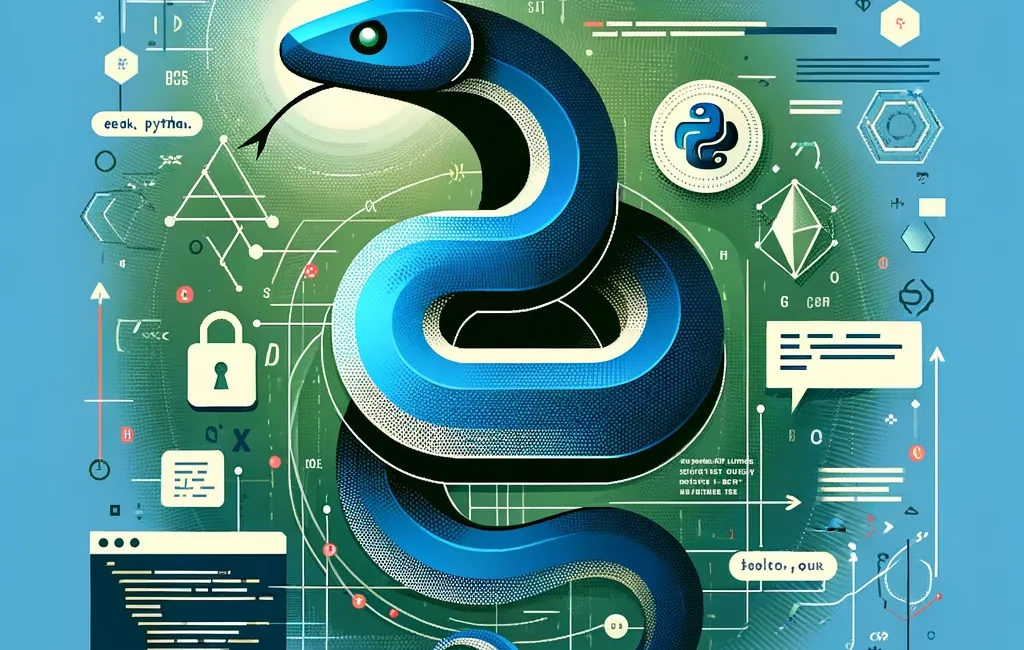Python is a popular high-level, interpreted programming language known for its simplicity and readability.
It was created by Guido van Rossum and first released in 1991. Python supports multiple programming paradigms, including procedural, object-oriented, and functional programming.
It has a large standard library and a vast ecosystem of third-party packages which makes it suitable for various tasks, such as web development, data analysis, machine learning, AI, and scientific computing.
What is PEP?
PEP stands for Python Enhancement Proposal. It is a design document providing information to the Python community, or describing a new feature for Python or its processes. A PEP is authored by a member of the Python community, and its final form is the result of a community-driven review process.
PEPs are stored in a version control system that is accessible to the entire Python community. This allows PEPs to be discussed by the community and modified by their authors based on feedback.
Here's an example of the structure of a PEP:
PEP: <pep number>
Title: <pep title>
Author: <list of authors' real names and optionally, email addrs>
Status: <Draft | Active | Accepted | Provisional | Deferred | Rejected |
Withdrawn | Final | Superseded>
Type: <Informational | Process | Standards Track>
Content-Type: <text/plain | text/x-rst>
Created: <date created on, in dd-mmm-yyyy format>
Post-History: <dates of postings to python-ideas and/or python-dev,
in dd-mmm-yyyy format>
The Importance of PEP
Python Enhancement Proposals (PEPs) play a crucial role in the Python community. They are design documents that provide information to the community or describe new features for Python or its processes.
Here are some reasons why PEPs are important:
Standardizing Python Code
PEPs help in standardizing Python code. They provide guidelines for writing code that is consistent with the rest of the Python ecosystem. This is especially important for open-source projects where multiple developers contribute. Standardization ensures that code is easy to understand, maintain, and extend.
For instance, PEP 8 is the style guide for Python code. It provides guidelines on how to format your code, such as how to use whitespace, how to name variables, and how to write comments.
Here's an example of PEP 8 compliant code:
# This is a PEP 8 compliant function
def add_numbers(a, b):
"""Return the sum of a and b"""
return a + b
Improving Code Readability and Consistency
PEPs improve the readability and consistency of Python code. By following the guidelines provided in PEPs, developers can write code that is easy to read and understand. This is especially important in large codebases where maintainability is a concern.
For example, PEP 20, also known as "The Zen of Python", provides guidelines for writing beautiful and readable code.
Here's a quote from it:
"Readability counts. Simple is better than complex."
Enhancing Collaboration Among Developers
PEPs enhance collaboration among developers. They provide a common language and framework for discussing and reviewing code changes. This makes it easier for developers to work together on projects, especially in the context of open-source development.
For instance, PEP 1, "PEP Purpose and Guidelines", describes the process for submitting and reviewing PEPs. This process ensures that all members of the Python community have a say in the development of Python and its ecosystem.
PEP Process
The Python community uses a process to manage PEPs and ensure that they are of high quality and benefit to the community. This process involves several stages and types of PEPs.
Types of PEPs
There are three types of PEPs:
- Standards Track PEPs: These PEPs propose changes to the Python language or standard library. They are further divided into three categories:
- Core: Changes to the Python language itself.
- StdLib: Changes to the Python standard library.
- Interface: Changes to Python's interfaces and interactions with other languages and systems.
- Informational PEPs: These PEPs provide information to the Python community. They do not propose changes to Python or its processes. Examples include PEP 8 and PEP 20.
- Process PEPs: These PEPs propose changes to Python's development process. They are used to update the PEP process itself.
PEP Workflow
The typical workflow for a PEP is as follows:
- Draft: The PEP author writes a draft PEP and submits it for review. The draft PEP is posted to the Python mailing list or GitHub repository for community feedback.
- Review: The community reviews the PEP and provides feedback. The author can update the PEP based on this feedback.
- Accepted: If the PEP is accepted, it moves to the accepted state. This means that the PEP is approved and will be implemented.
- Final: Once the PEP is implemented, it moves to the final state. This means that the PEP is part of Python or its processes.
Here's an example of a PEP workflow:
PEP: 12
Title: Sample PEP
Author: John Doe
Status: Draft
Type: Standards Track
Created: 01-Jan-2023
Post-History: 01-Jan-2023
Examples of Famous PEPs
Here are some examples of famous PEPs:
- PEP 8: This PEP provides guidelines for writing Python code that is easy to read and understand. It covers topics such as indentation, whitespace, comments, and naming conventions.
- PEP 20: Also known as "The Zen of Python", this PEP provides guidelines for writing beautiful and readable code. It includes principles such as "Simple is better than complex" and "Readability counts".
- PEP 484: This PEP proposes a type hinting system for Python. It allows developers to add type annotations to their code, which can be used by tools such as type checkers and IDEs.
How to Write a PEP
Writing a PEP (Python Enhancement Proposal) is a great way to contribute to the Python community.
Here's a step-by-step guide on how to write a PEP.
This article is for paid members only
To continue reading this article, upgrade your account to get full access.
Subscribe NowAlready have an account? Sign In

